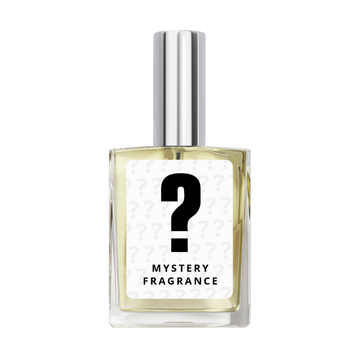PERFUME? EAU DE PARFUM? PARFUM DE TOILETTE? WHAT IS THE DIFFERENCE?
The world of fragrances is endlessly intriguing. Every fragrance that you see in the shops has probably taken months, if not years to develop. It’s a highly complex, not to mention a highly difficult process. Many of the perfumers involved in creating them will also come equipped with years of experience.
Although generically refereed to by men as 'Cologne' and by women 'perfume' The dilution classes such as "eau de toilette' on the bottle you see aren't there to sound nice. These classes are actually determined by the potency of the fragrance.
You may be asking what are they diluting my fragrance with? Are the cologne and perfume companies all ripping me off?!
Still feeling confused? Let us break it down for you simply.
There’s no such thing as a perfume or cologne that’s 100% pure fragrance. That would be way too powerful, would be unable to mist out of a sprayer, and might also do unpleasant things to your skin.
Usually, perfume ingredients are blended with a solvent, which is typically ethanol or a mix of ethanol and water. These ingredients are pre-determined by an expert perfume-developer (sometimes called a ‘nose’).
So how much of my fragrance is actually the stuff that smells good?
Well, the higher the percentage of fragrance oil ingredients there are in the bottle (compared to the solvent), the more potent the scent. If a fragrance is more potent, it’ll not only smell more intense, but will also last longer.
WHAT ARE THE DILUTION CLASSES?
- Parfum / extrait. In English, this is usually called perfume, or sometimes perfume extract. This is your top-quality fragrance, with the ingredients making up around 20-40% of the total fluid content. That means it’s long-lasting, noticeable and complex.
- Esprit de parfum. This dilution class isn’t very commonly used; but we’ll run you through it just so you know it exists. It’s slightly less potent than perfume, with around 15-30% ingredients to 70-85% solvent. It’s still excellent quality though.
- Eau de parfum. This is the most commonly available class, and is a good all-rounder. Sometimes referred to as ‘parfum de toilette’, the strength of this dilution class is typically between 10-20%. That means it’ll last well throughout the day, but won’t be quite as potent as a pure parfum.
- Eau de toilette. Eau de toilette (also quite common) is another solid choice, and is usually a little bit more reasonably priced. Expect the ingredients to comprise roughly 5-15% of the fluid.
- Eau de cologne. This is usually just called ‘cologne’; and this is where things often get muddled, as cologne is often used to describe any male fragrance, regardless of the strength. Traditionally, an eau de cologne is 3-8% ingredients, 97-92% solvent; so it’s meant to be a more diluted, less powerful option. This makes it a good choice for spritzing on during the day.
Disclaimer: all products mentioned above, along with their labelling, are a guide and should not be confused with the actual fragrance brand. Any name trademarks and copyrights are the property of their respective designers or makers. Please note, these fragrances are not to be confused with the originals, and we have no affiliation with any companies mentioned. Our interpretations of the fragrances were created through chemical analysis and personal development, and their description is solely to give the customer an idea of the nature of the scent. It is not designed to mislead or confuse the customer in any way, and does not infringe on the manufacturer's or designer's name or trademark.
















